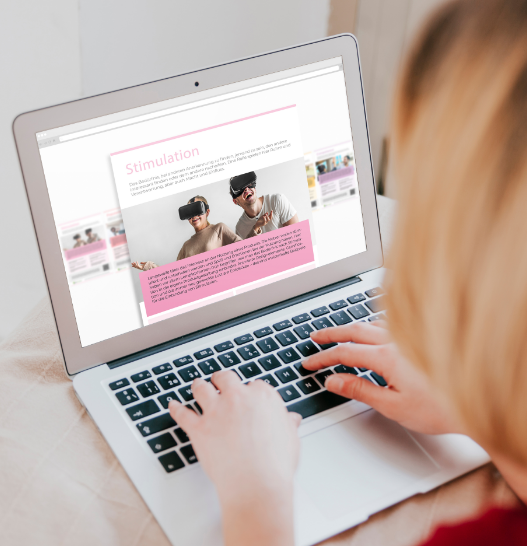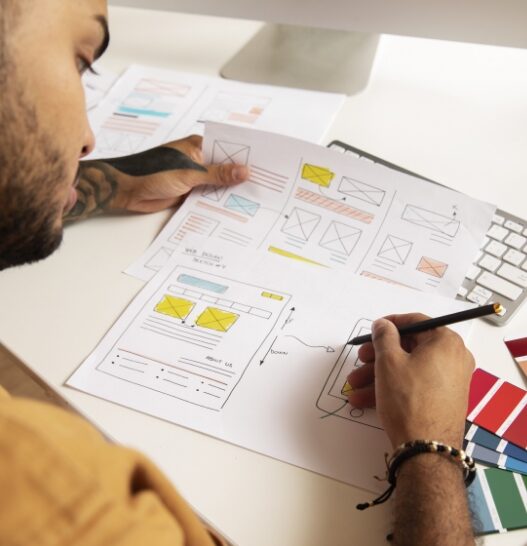Now that we have found out about the most important user needs in technology usage, let’s list our top 6 reasons why you should be aware of user needs and use them in your daily work.
This article lays the foundation for the finale of this series. In the final article, we will then clarify what methods are available to specifically learn about user needs. Here we will also give you tips on how to integrate psychological product design into your own development practice as efficiently as possible.
So let’s jump right into the first of our 6 reasons. Enjoy!
Reason 1: You come to a better UX in a targeted way.
In our introductory article, we already learned the following: a good UX is only possible if you specifically satisfy the needs of your own users. Of course, that can only happen if you actually know what those needs are. So the first reason should already be familiar to readers of this series.
It is important to understand that these needs are not always as obvious as one might initially think. Even if you think you know the users, you are often surprised by what user wants and needs are revealed in UX tests and user research methods.
Reason 2: User needs are important input to the design process.
Once you have identified these user needs, you should take them as serious input for your design process. That way, you will arrive at a product that is tailored in the best possible way for users, step by step.
How to do this. Your development team must formulate requirements from the needs and use them to develop solutions that meet those user needs.
The solution in question comes from your team, and the evaluation of whether the users have understood it correctly comes from your users themselves. In terms of implementation, this means that you test your solutions for understanding and acceptance in the form of simple prototypes with real users.
Reason 3: Great features are created for the right target group!
In order to develop features tailored to the target audience, you need to know what their needs are.
To better understand what we mean by this, let’s take a closer look at an example from a past article in this needs series. Here we find a feature that works very well because the developers know their own users very well.

In this screenshot, you can see a very good example of a feature that triggers a sense of meaningfulness. As a reminder, Too Good To Go is an app that allows users to save food from restaurants and supermarkets from the trash can. That means buying a “magic bag,” which is a bag of food that still has a shelf life but is left over at the end of the day.
The user’s actions here are made meaningful with statistics on CO2e saved. For this to work, it must be certain that the real users also want exactly that.
If the user group should be completely indifferent to the environment, this feature would come to nothing and in the worst case even earn some ridicule. But if you know your user group (as the developers of the above example surely do!), then you can hit the bull’s eye with such features and massively increase the user experience. The statistics shown above will then motivate you to continue using the app and at the same time satisfy the need for relevance.
Reason 4: Knowing user needs means progress and innovation for your product!
Why is this so? Surely you use different technology products or systems in your private life or at work. Take one of the systems you use most often. For sure you have wished for one or more functions several times. This function or feature would make your daily work so much easier. Now imagine that the manufacturer of this system listens to your prayers (and in this case he has an open ear for your needs). This means that the product in question has evolved, and for the better!
So user needs result in improvements, features and enhancements that allow real users to solve a problem faster or better.
Identifying and discovering user needs means understanding what progress the user would like to make through the product. So an essential question for your psychological product design is: “What can the user achieve through my product that they couldn’t achieve before, could achieve worse, or could achieve with more effort?”
But it’s not just for product development that these insights are incredibly important. If you have identified true user needs and their satisfaction is essential for your product, then you have also gained very clear statements for your marketing. You can then rightly say that your product enables the user to do his task better, faster and even lazier!
Reason 5: The successor product also benefits from the collected knowledge about the users.
Successor generations and improved product variants benefit greatly from your increased user understanding. The more knowledge you have generated about your own users and their needs, the easier and faster it is to design similar products.
You know at an early stage which features should be the focus for follow-up products and which ones were not previously appealing.
Reason 6: You get clues about which features are most important
It is often worthwhile to launch a product that meets the core needs of users early on. If this product is then to be improved step by step, the identified user needs will give you clear indications of which improvements you should tackle next.
Identified user needs can also play a major role in setting your own benchmarks. They provide you with good clues as to which values should be measured and compared to ensure that your product really does improve.
A teaser for the last article: How can you specifically find out the needs of your own users?
What methods are there for finding out the needs of your own users? We will deal with exactly this question in our upcoming and last article of the great needs series. In addition, you will also find our needs maps. These provide you with a practical overview of features of other products that specifically satisfy user needs.
Conclusion
We’ve identified the following six reasons why you should know your users’ needs:
- You will arrive at a better UX specifically
- User needs are an important input to the design process
- Great features emerge for the right audience
- User needs can mean progress and innovation for your product
- The successor product also benefits from the collected knowledge about the user
- You get clues about which features are most important
Do you have questions about the integration of user needs in your specific case? Feel free to get in touch via our contact form and arrange a free get-to-know-you meeting with us.
We are very much looking forward to your feedback!
Our need series
Here is our overview of the articles in the series:
Part 1: Introduction
Part 2: Connectedness
Part 3: Security
Part 4: Competence
Part 5: Popularity
Part 6: Stimulation
Part 7: Autonomy
Part 8: Meaningfulness



